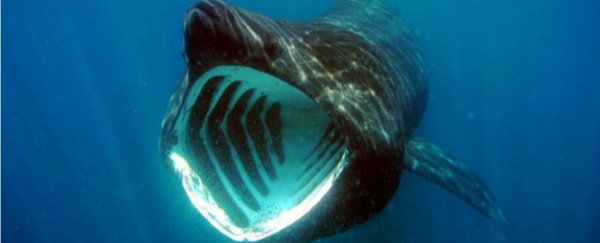Hundreds of basking sharks (Cetorhinus maximus) have been spotted swarming in massive groups, and it's all a big mystery.
A new study has revealed that when researchers were trying to locate the endangered North Atlantic right whales, they came across something strange.
Between 1980 and 2013, these researchers spotted hundreds of basking sharks in their aerial surveys, congregating in groups of up to 1,398 individuals.
The whole situation is puzzling because the basking shark, which is the second largest fish in the world, is usually quite solitary. Plus, it spends about 90 percent of its time deep underwater.
When the basking shark does make its way to the surface, it likes to be on its own or, at best, hang out in small groups.
Of the 10,000 documented sightings the researchers reported, 99 percent were of groups of seven basking sharks or less.
Still, the new study has revealed that on ten occasions, these sharks gathered in unusually large groups.
And while no one knows exactly why basking sharks do this, there are a few theories that range from mating to feeding to protection.
The biggest basking shark swarm, spotted in 2013 off the southern coast of New England, reveals a few vital clues.
Lead author of the study, biologist Leah Crowe from the National Oceanic and Atmospheric Administration's Northeast Fisheries Science Center, told National Geographic that in this instance the 1,400-some sharks were most likely feeding on zooplankton.
Her study proposes that these sharks could be using their numbers to help reduce the drag that is caused when they open their mouths for feeding.
By "drafting" off each other like cyclists do when racing, these sharks could be saving some much-needed energy while they feed.
But when it comes to solving this mystery, aerial data can only reveal so much.
"Seeing them from the air is interesting, but it doesn't tell us that much about the environmental factors," said Crowe, citing the density of plankton as an example.
The problem is, if scientists get too close, they could also alter the behaviour of these creatures.
The citizen science program, "Spot a Basking Shark", is trying to close this gap in knowledge – an important endeavour given that the basking shark is currently listed as a vulnerable species.
The study was published in the Journal of Fish Biology.
